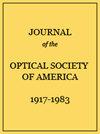A high-speed variable-temperature ultrahigh vacuum scanning tunneling microscope with spiral scan capabilities.
Journal of the Optical Society of America and Review of Scientific Instruments
Pub Date : 2022-05-01
DOI:10.1063/5.0079868
引用次数: 1
Abstract
We present the design and development of a variable-temperature high-speed scanning tunneling microscope (STM). The setup consists of a two-chamber ultra-high vacuum system, including a preparation and a main chamber. The preparation chamber is equipped with standard preparation tools for sample cleaning and film growth. The main chamber hosts the STM that is located within a continuous flow cryostat for counter-cooling during high-temperature measurements. The microscope body is compact, rigid, and highly symmetric to ensure vibrational stability and low thermal drift. We designed a hybrid scanner made of two independent tube piezos for slow and fast scanning, respectively. A commercial STM controller is used for slow scanning, while a high-speed Versa Module Eurocard bus system controls fast scanning. Here, we implement non-conventional spiral geometries for high-speed scanning, which consist of smooth sine and cosine signals created by an arbitrary waveform generator. The tip scans in a quasi-constant height mode, where the logarithm of the tunneling current signal can be regarded as roughly proportional to the surface topography. Scan control and data acquisition have been programmed in the experimental physics and industrial control system framework. With the spiral scans, we atomically resolved diffusion processes of oxygen atoms on the Ru(0001) surface and achieved a time resolution of 8.3 ms per frame at different temperatures. Variable-temperature measurements reveal an influence of the temperature on the oxygen diffusion rate.具有螺旋扫描能力的高速变温超高真空扫描隧道显微镜。
介绍了一种变温高速扫描隧道显微镜(STM)的设计与研制。该装置由两室超高真空系统组成,包括制备室和主室。制备室配有用于样品清洗和膜生长的标准制备工具。主腔室容纳STM,该STM位于连续流动低温恒温器内,用于高温测量期间的反冷却。显微镜体紧凑,刚性,高度对称,以确保振动稳定性和低热漂移。我们设计了一种由两个独立的管压电片组成的混合扫描仪,分别用于慢速和快速扫描。商用STM控制器用于慢速扫描,而高速Versa Module Eurocard总线系统控制快速扫描。在这里,我们实现了用于高速扫描的非常规螺旋几何,它由任意波形发生器产生的平滑正弦和余弦信号组成。尖端以准恒定高度模式扫描,其中隧道电流信号的对数可以被视为与表面形貌大致成正比。在实验物理和工业控制系统框架中编写了扫描控制和数据采集程序。通过螺旋扫描,我们原子解析了Ru(0001)表面氧原子的扩散过程,并在不同温度下实现了每帧8.3 ms的时间分辨率。变温测量揭示了温度对氧扩散速率的影响。
本文章由计算机程序翻译,如有差异,请以英文原文为准。
求助全文
约1分钟内获得全文
求助全文

 求助内容:
求助内容: 应助结果提醒方式:
应助结果提醒方式:


